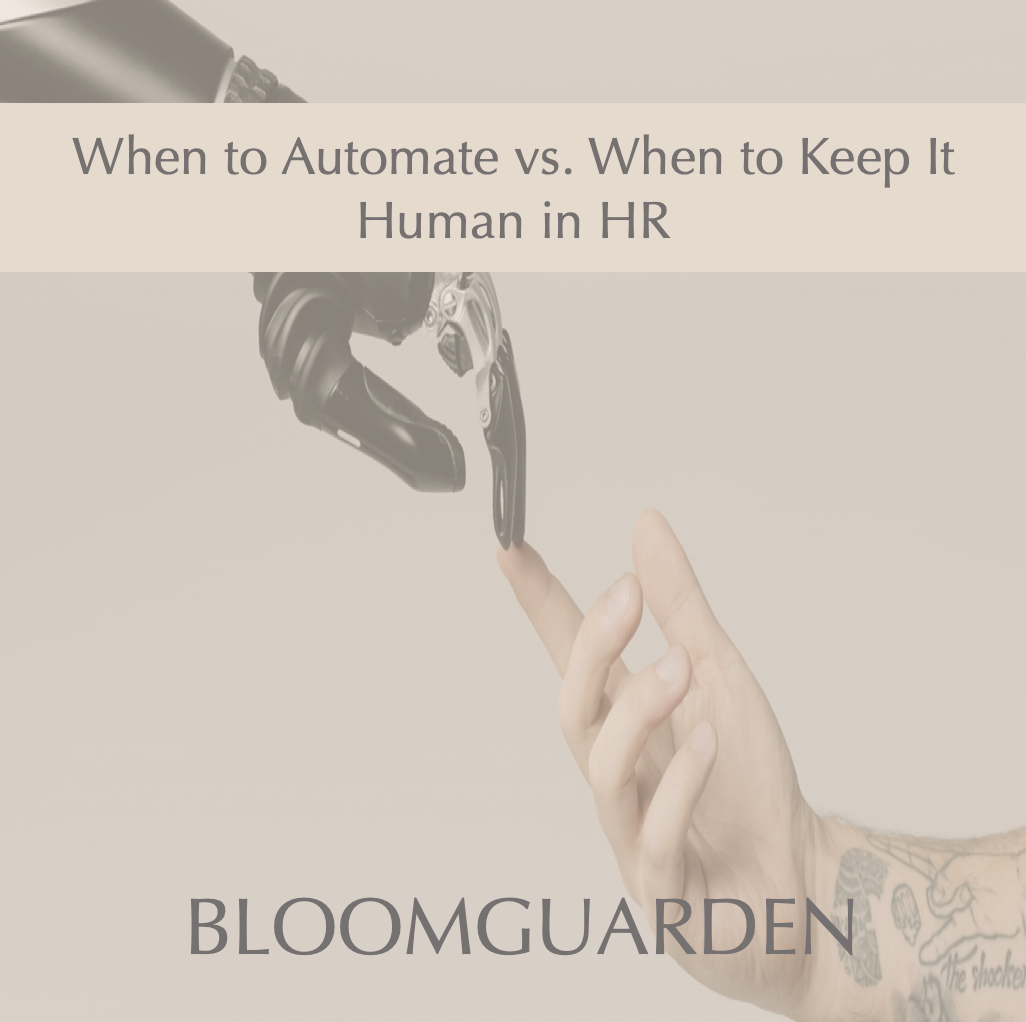When to Automate & when to keep it human in hR
When to Automate vs. When to Keep It Human in HR: A 2025 Guide
As artificial intelligence (AI) and automation technologies continue to evolve, HR departments are increasingly integrating these tools to enhance efficiency and decision-making. However, determining the appropriate balance between automation and human interaction remains crucial. This guide explores scenarios where automation adds value and instances where the human touch is indispensable.
When to Automate in HR
1. Routine Administrative Tasks
Automation excels at handling repetitive and time-consuming tasks, freeing HR professionals to focus on strategic initiatives.
Payroll Processing: Automated systems ensure timely and accurate payroll management.
Benefits Administration: Self-service portals allow employees to manage their benefits, reducing HR workload.
Leave Management: Automated tracking of leave balances and approvals streamlines the process.
2. Talent Acquisition Processes
AI tools enhance the recruitment process by efficiently managing large volumes of applications.
Resume Screening: AI algorithms can quickly identify qualified candidates based on predefined criteria.
Chatbots for Candidate Queries: Automated responses provide immediate answers to common applicant questions.
3. Employee Onboarding
Automated onboarding platforms ensure consistency and completeness in the onboarding process.
Document Management: Digital systems handle the collection and storage of necessary documentation.
Training Modules: Automated delivery of training materials ensures new hires receive essential information promptly.
When to Keep It Human in HR
1. Conflict Resolution and Employee Relations
Sensitive issues such as workplace conflicts or grievances require human empathy and judgment.
Mediation: Human HR professionals can navigate the nuances of interpersonal disputes effectively.
Counseling: Providing support for personal or professional challenges benefits from human understanding.
2. Performance Management and Feedback
While data can inform performance metrics, delivering feedback and setting goals are best handled personally.
One-on-One Reviews: Direct conversations allow for nuanced discussions about performance and development.
Career Development Planning: Tailoring growth opportunities requires understanding individual aspirations and potential.
3. Diversity, Equity, and Inclusion (DEI) Initiatives
Fostering an inclusive workplace culture necessitates human insight and cultural competence.
Bias Training: Interactive sessions led by trained professionals can address unconscious biases effectively.
Inclusive Policy Development: Crafting policies that reflect diverse perspectives benefits from collaborative human input.
Striking the Right Balance
Integrating automation in HR processes offers significant benefits, but it's essential to recognize its limitations. A hybrid approach that leverages technology for efficiency while preserving human interaction for complex and sensitive matters ensures a holistic HR strategy.
References:
Society for Human Resource Management. (2024). Using Artificial Intelligence for Employment Purposes.
AIIM. (2020). The Pros and Cons of Automating Human Resources.
SHRM. (2024). HR Adopts AI.
SHRM. (2024). When Automation Backfires: How Rushed AI Implementation Can Hurt.
SHRM. (2024). AI Adoption in HR Is Growing.
